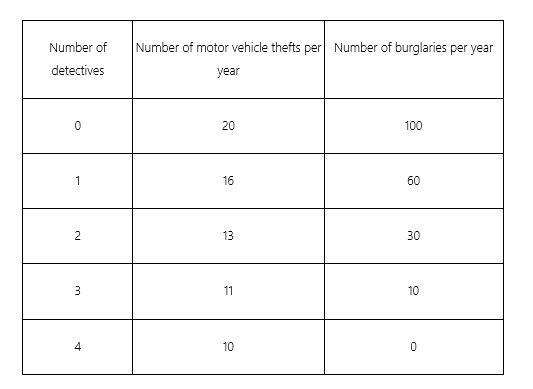Consider a police department trying to decide how to allocate its crime prevention resources between motor vehicle thefts and burglaries. The marginal benefit of one less motor vehicle theft is $20,000, and the marginal benefit of one less burglary is $1,000. Suppose the annual number of motor vehicle thefts and the annual number of burglaries depends on the number of detectives assigned to each type of crime, as shown in the table below. Each detective costs $35,000 each per year, regardless of whether the detective is assigned to motor vehicle thefts or burglaries.  The marginal benefit of the fourth detective assigned to burglaries is ______ per year.
The marginal benefit of the fourth detective assigned to burglaries is ______ per year.
Definitions:
Ratio Analysis
A quantitative method of gaining insight into a company's liquidity, operational efficiency, and profitability by comparing line items on financial statements.
Q5: When the government transfers resources to the
Q6: The following table shows the relationship
Q13: There are 20 residents in the village
Q51: In general, the optimal amount of medical
Q64: The table below shows how total
Q72: The pattern in which insurance is purchased
Q84: A reduction in workers' marginal productivity would
Q101: In the market for used cars, the
Q119: If a market is in equilibrium and
Q126: Paper Pushers Inc. hires workers in a